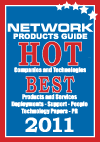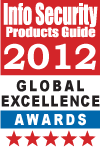Today, Rainer Enders, VPN expert and CTO of Americas at NCP engineering, addresses how IT and data management executives can properly protect their corporate data.
Q: What are the most effective steps IT and data management executives need to take in ensuring the best security for corporate information?
Rainer Enders: There is no substitute for best-of-breed security solutions. IT managers must realize that only betting on one vendor for all security needs will leave security holes in the architecture. A key starting point is the assessment of risk and exposure. For example, if you do not have employees working outside the office, you’ll have far different security implications than if you have a large mobile workforce. Obviously, the cost of the solution must match the assets at risk that will be insured and protected against damage or loss. A clear and concise security policy must be established that involves all the key stakeholders, and the policy must then be implemented and enforced at all levels. This is probably the most important and, sadly, the least followed advice.
Another trap many IT managers fall into is changing security infrastructure too quickly. Rather then taking a blended migration approach, a rip-out-and-replace approach is usually implemented, neglecting benefits and merits of existing incumbent security technologies. This has happened when SSL VPN was introduced to replace IPsec VPN. Customers followed early promises, only to see many companies now returning to the “old” IPsec VPN or adopting a hybrid approach, which would have served them better from the start. So any security architecture framework should follow the technology, not a vendor product roadmap.
If you have any questions on VPNs or anything else related to secure remote access, send them to editor@vpnhaus.com.
Rainer Enders is CTO, Americas, at NCP engineering.







